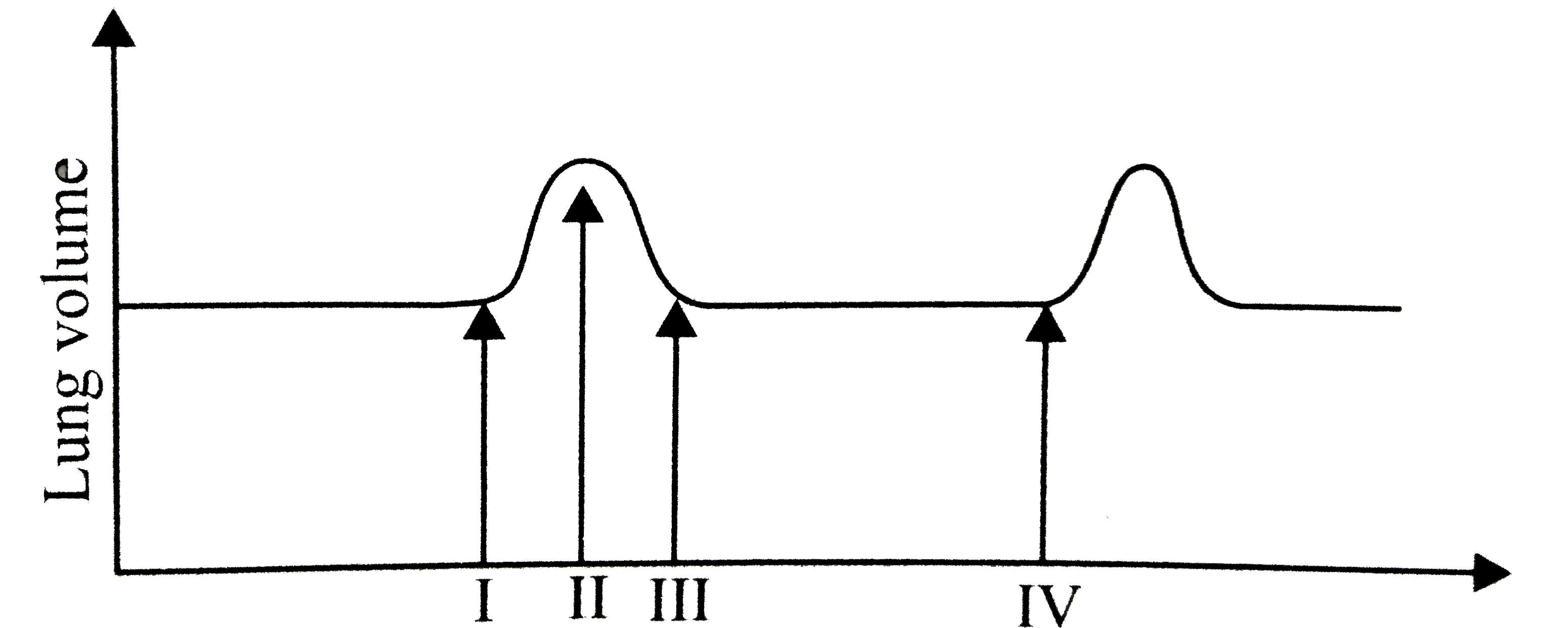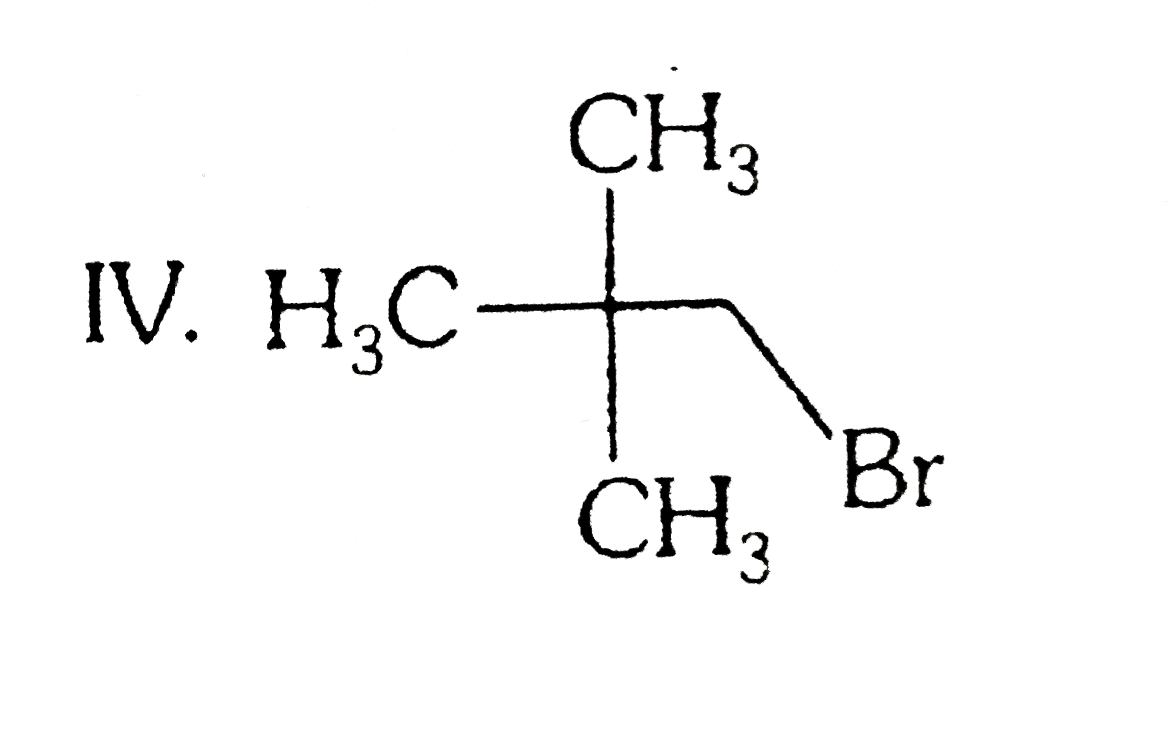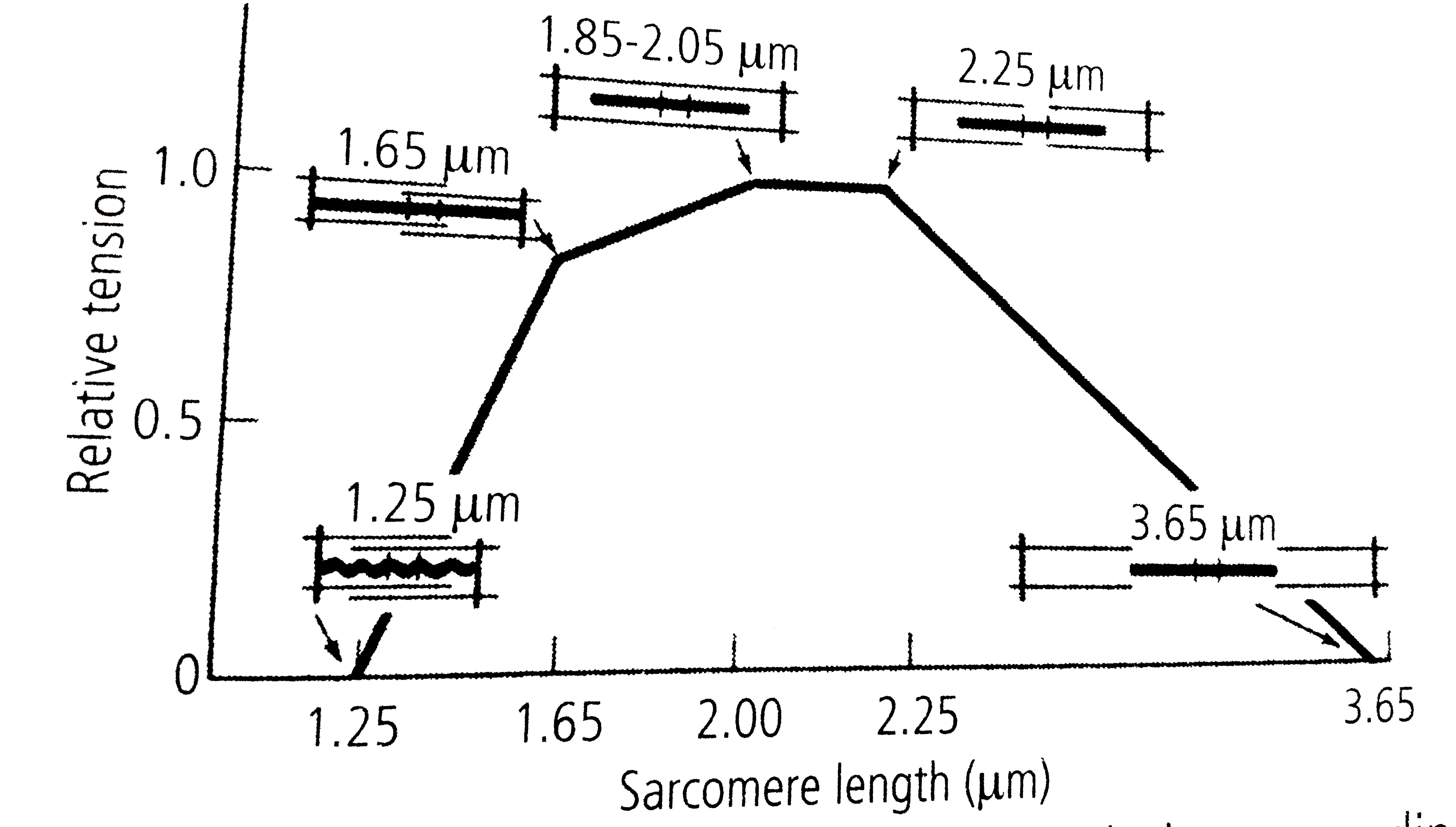Breathing, an important step of the respiratory system, is a two-part process involving-inhalation and exhalation. During the process of breathing, the thorax region shows some changes. Identify the statement/s from below that is/are related to the exhalation process.
I. External intercostal muscles contract
II. Pressure in the lungs increases
III. Diaphragm contracts
IV. The volume of thorax decreases
II and IV only
I, II and III only
I , II , III and IV
II and III only
The correct Answer is:A
To solve the question regarding the exhalation process in the respiratory system, let's analyze each of the provided statements step by step.
1. Understanding Exhalation: Exhalation is the process of breathing out air from the lungs. It occurs when the pressure inside the lungs is greater than the atmospheric pressure.
2. Statement I: External intercostal muscles contract:
- This statement is incorrect. During exhalation, the external intercostal muscles actually relax, allowing the rib cage to move downwards and inwards, which aids in expelling air from the lungs.
3. Statement II: Pressure in the lungs increases:
- This statement is correct. As the volume of the thoracic cavity decreases during exhalation, the pressure in the lungs increases, which forces air out of the lungs.
4. Statement III: Diaphragm contracts:
- This statement is incorrect. During exhalation, the diaphragm relaxes (it moves upwards), which contributes to the decrease in thoracic volume.
5. Statement IV: The volume of thorax decreases:
- This statement is correct. During exhalation, the volume of the thoracic cavity decreases as the diaphragm and intercostal muscles relax, leading to a reduction in lung volume and an increase in pressure.
Conclusion:
The statements related to the exhalation process are:
- II. Pressure in the lungs increases
- IV. The volume of thorax decreases
Final Answer:
The correct statements related to the exhalation process are II and IV.
---
- This statement is incorrect. During exhalation, the external intercostal muscles actually relax, allowing the rib cage to move downwards and inwards, which aids in expelling air from the lungs.
- This statement is correct. As the volume of the thoracic cavity decreases during exhalation, the pressure in the lungs increases, which forces air out of the lungs.
- This statement is incorrect. During exhalation, the diaphragm relaxes (it moves upwards), which contributes to the decrease in thoracic volume.
- This statement is correct. During exhalation, the volume of the thoracic cavity decreases as the diaphragm and intercostal muscles relax, leading to a reduction in lung volume and an increase in pressure.
The statements related to the exhalation process are:
- II. Pressure in the lungs increases
- IV. The volume of thorax decreases
The correct statements related to the exhalation process are II and IV.
Similar Questions
Select the incorrect statement/s regarding downstream processing from the one given below.
I. The process occurs during the biosynthetic stage.
II. It is there to facilitate increased production of desired product .
III. It helps to ensure sterile conditions during the manufacturing of the desired product.
IV. Collection of processes to ensure the desired product is ready for marketing.View SolutionLe Chatelier's Principle
If a system at equilibrium is subjected to a change of any one of the factors such as concentration, pressure or temperature, the system adjusts itself in such a way as to nullify the effect of that change.
Change of pressure : If a system consists of gases, then the concentration of all the components can be alterd by changing the pressure. To increase the pressure on the system,the volume has to be decreased proportionally. The total number of mols per unit volume will now be more and the equilibrium will shift in the direction in which there is a decrease in number of moles i,e. towards the direction in which there can be decrease in pressure.
Effect of pressure on melting point : There are two types of solids:
(a) Solids whose volume decreases on melting e.g., ice,diamond carborundum magnesium nitride and quratz.
Solids (higher volume)⇔Liquid (lower volume) The process of melting is facilitated at high pressure, thus, melting point is lowerd.
(b) Solids whose volume increase on melting e.g.,Fe,Cu,Ag,Au,etc.
Solid (lower volume)⇔ Liquid (higher volume) In this case the process of melting become difficult at high pressure, thus melting point becomes high.
(c) Solubility of substances : When solid substances are dissolved in water, either heat is evolved (exothermic) or heat is absorbed (endothermic).
KCI+aq⇔KCI(aq)−heat
In such cases, solubility increase with increase in temperature. Consider the case of KOH, when this is dissolved,heat is evolved.
KOH+aq⇔KOH(aq)+heat
In such cases, solubility decrease with increase in temperature.
(d) Solubility of gases in liquids : When a gas dissolves in liquid,there is decrease in volume. Thus increase of pressure will favour the dissolution of gas in liquid.
Au(s)⇔Au(l)
Above equsilibrium is favoured at :View Solution
Knowledge Check
- Question 1 - Select One
The given figure illustrates the changes in lung volume during the process of breathing.

The changes from II to III indicates theAmovement of diaphragm away from the lungsBexpansion of the thoracic cavityCmovement of air out of the lungsDexpansion of ribs. - Question 2 - Select One
Which of the following sequenes is correct to intite inspiration ?
(i) the contraction of external intercostal muscles raises the ribs and sternum
(ii) Volume of thorax increases in the dorso-ventral axis
(iii) intrapulmonary pressure decreases
(iv) Diaphragm contraction
(v) Air rushes into lungs
(vi) Volume of thorax increases in the anterior-posterior axisA(i),(ii),(iv),(v),(iii),(vi)B(i),(ii),(iii),(iv),(vi),(v)C(i),(ii),(iv),(vi),(iii),(v)D(vi),(v),(i),(ii),(iii),(iv) - Question 3 - Select One
Read the following four statement carefully.
(i) Ventral respiratory group of neurons of medulla oblongata can cause both inspiration and expiration.
(ii) The part of the respiratory system starting with the external nostrils up to the terminal bronchioles constitutes the respiratory or exchange part of the respiratory system.
(iii) During swallowing epiglottis can be covered by a thin elastic cartilaginous flap called glottis to prevent the entry of food into the larynx.
(iv) Binding of oxygen with haemoglobin in primarily related of oxygen with haemoglobin is primarily related to partial prssure of O2.
Which of the above two statement are correct ?A(ii) and (iii)B(iii) and (iv)C(i) and (ii)D(i) and (iv)
Read the following statement about human respiration (i) trachea divides at the level of 6th thoracic vertebra
(ii) terminal bronchioles alveoli and their ducts form the respiratory part of this system
(iii) contraction of diaphragm increases volume of thoracic chamber dorsoventrally
(iv) the internal intercostals help in inspirationView SolutionConsider the following four statements (a-d) and select the option which includes all the correct ones only :−
(a) All the time of inspiration , contraction in diaphragm and external intercostal muscles take place.
(b) Normal breathing is also called as abdominal breathing.
(c ) Expiration during sneezing, coughing, yoga is normal expiratio during which IICM and abdominal muscles relax.
(d) Inspiration can occur if the pressure within lungs (intra pulmonary pressure) is more than the atmospheric pressure.View SolutionDependence of Spontaneity on Temperature:
For a process to be spontaneous , at constant temperature and pressure , there must be decrease in free energy of the system in the direction of the process , i.e. ΔGP.T<0.ΔGP.T=0 implies the equilibrium condition and ΔGP.T>0 corresponds to non- spontaneity.
Gibbs- Helmholtz equation relates the free energy change to the enthalpy and entropy changes of the process as : ΔGP.T=ΔH−TΔS ...(1)
The magnitude of ΔH does not change much with the change in temperature but the entropy factor TΔS change appreciably . Thus, spontaneity of a process depends very much on temperature.
For endothermic process, both ΔH and ΔS are positive . The energy factor, the first factor of equation, opposes the spontaneity whereas entorpy factor favours it. At low temperature the favourable factor TΔS will be small and may be less than ΔH,ΔG will have positive value indicated the nonspontaneity of the process. On raising temperature , the factor TΔS Increases appreciably and when it exceeds ΔH,ΔG would become negative and the process would be spontaneous .
For an expthermic process, both ΔH and ΔS would be negative . In this case the first factor of eq.1 favours the spontaneity whereas the second factor opposes it. At high temperature , when TΔS>ΔH,ΔG will have positive value, showing thereby the non-spontaneity fo the process . However , on decreasing temperature , the factor ,TΔS decreases rapidly and when TΔS<ΔH,ΔG becomes negative and the process occurs spontaneously. Thus , an exothermic process may be spontaneous at low temperature and non-spontaneous at high temperature.
A reaction has a value of ΔH=−40Kcal at 400 k cal mol−1. The reaction is spontaneous, below this temperature , it is not . The values fo ΔG and ΔS at 400 k are respectivelyView SolutionNucleophilic aliphatic substitution reaction is mainly of two types: SN1 and SN2. The SN1 mechanism is a two step process. Reaction velocity of SN1 reaction depends only on the concentration of the substrate. Since product formation takes place by the formation of carbocation, optically active substrate gives (+) and (-) forms of the product. In most of the cases the product usually consits of 5−20% inverted product and 80−95% racemised species. The more stable the carbocation, the greater is the proportion of racemisation. In solvolysis reaction, the more nucleophilic the solvent, the greater is the proportion of inversion.
Which of the following compounds will give SN1 and SN2 reactions with considerable rate?
I. C6H5−CH2−Br (II) CH2=CH−CH2−Br (III) CH3−CH(Br)CH3 (IV)
Select the correct answer from teh codes given belowView SolutionThe given graph shows length-tension curve for a typical vertebrate sarcomere.

By analysing the graph, what can you deduce regarding the muscle contraction?
(i) Neither the myosin filaments nor the actin thin filaments change in length when a sarcomere shortens or is stretched. Instead, it is the extent of ocerlap between actin and myosin filaments that changes.
(ii) The total tension produced by a sarcomere is proportional to the total number of cross-bridges that can interact with actin filaments, and this number in turn is proportional to the amount of of overlap between thick and thin filaments.
(iii) The tension produced by the muscle is maximal when the overlap between thick and thin filamentss allows the largest number of myosin cross-bridges to bind to actin.
(iv) Tension drops off with increased lenght, because the thick and thin filaments overlap less and fewer cross-bridges can bind.
Tension drops off with decreased length, because thin filaments at the two ends of the secromere begin to collide with each other, preventing further shortening.View Solution

